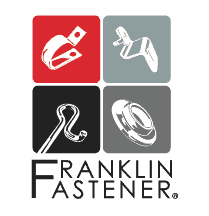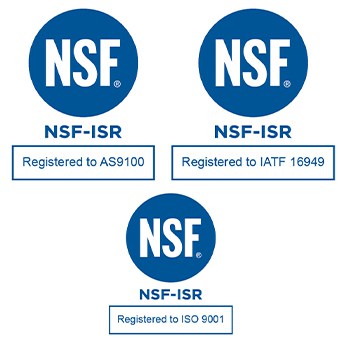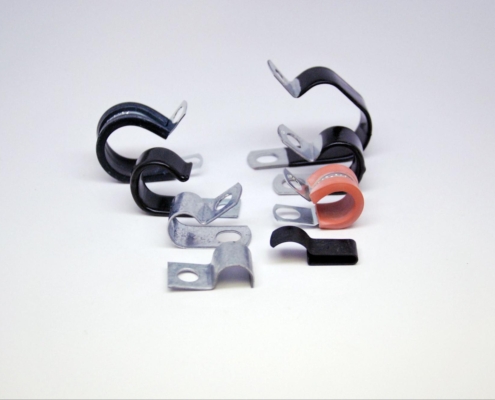 https://franklinfastener.com/wp-content/uploads/2025/09/image1-4.jpg
1339
1999
Abstrakt Marketing
/wp-content/uploads/2022/12/fastener-logo1-01.png
Abstrakt Marketing2025-09-18 08:41:252026-01-04 09:50:05Military Clamps and Clips: Meeting MIL‑SPEC Standards
https://franklinfastener.com/wp-content/uploads/2025/09/image1-4.jpg
1339
1999
Abstrakt Marketing
/wp-content/uploads/2022/12/fastener-logo1-01.png
Abstrakt Marketing2025-09-18 08:41:252026-01-04 09:50:05Military Clamps and Clips: Meeting MIL‑SPEC StandardsThe Importance of Automotive Metal Stamping
The automotive industry needs precisely made components to build cars that are efficient and safe for roadway use. One of the processes many manufacturers use is metal stamping, which uses specialized machinery to shape and mold metal. In this blog, we’ll review the parts this technique creates and the advantages it offers the auto industry.
Parts Created by Automotive Stamping
Vehicle Body Components
Car manufacturers use metal stamping to produce vehicle body components like doors, hoods, fenders, roofs, and trunk lids. These parts must be durable, lightweight, and precisely shaped, and metal stamping is an efficient and cost-effective method of achieving these requirements.
Structural and Safety Parts
Metal stamping is also used to manufacture structural and safety components such as frame rails, cross-members, brackets, and reinforcements. These parts are essential for the vehicle’s structural integrity, stability, and security.
Engine and Transmission
The automotive industry uses metal stamping to develop various engine and transmission parts like cylinder heads, engine covers, valve covers, oil pans, bearing caps, and transmission housings. These components must withstand high temperatures, pressure, and mechanical stress, and metal stamping ensures the necessary strength and precision.
Suspension and Chassis Parts
Metal stamping is used to produce suspension and chassis components like control arms, subframes, brackets, and linkages. These components provide stability, handling, and comfort to the vehicle.
Interior and Exterior Trim
Car manufacturers use metal stamping to build interior and exterior trim components such as instrument panel frames, center consoles, door handles, emblems, and grilles. These parts enhance the aesthetics and functionality of the vehicle.
Benefits of Automotive Metal Stamping
The automotive industry greatly benefits from metal stamping techniques, providing both practical and economic advantages, including:
Increased Efficiency
One of the main advantages of metal stamping in the automotive industry is its efficiency and speed. The metal stamping process involves the use of specialized equipment, such as stamping presses and hydraulic presses, which enable the rapid manufacture of components. Particularly, progressive and transfer die stamping strategies are utilized to deliver precision-stamped parts, critically boosting the production pace.
Improved Quality
Metal stamping capabilities provide excellent quality for automotive metal stamping. The precision of the stamping processing method warrants consistency in the end product. The automotive stamping die is designed for good surface quality and possesses attributes like good interchangeability in manufacturing, giving a superior finish to the stamped parts. Cold stamping and hot stamping techniques also maintain a consistent rate during the metal fabrication process. Plus, with a mechanical press or a mechanical servo, manufacturers can ensure perfection in every stamping part.
Enhanced Value
Metal stamping is one of the most cost-effective processing methods in the automotive industry. The stamping process enables the industry to produce a high volume of parts at a reduced cost—making working with various materials such as stainless steel and ferrous metals highly economical. Additionally, EV and slide stamping are renowned for efficiently utilizing sheet metal and reducing waste and costs.
Increased Flexibility
This processing method’s flexibility allows the production of parts in various shapes and sizes, and the versatility of metal stamping techniques gives the automotive industry the freedom to create intricate designs. From flat sheet metal strips to complex 3D shapes, the stamping process can turn a metal strip into a vast array of parts needed in auto production.
Reduced Waste
The metal stamping processes increase fuel efficiency by creating lightweight auto parts. Additionally, metal stamping techniques like fine blanking contribute significantly to waste reduction. It reduces waste in the fabrication process and helps the industry contribute less to environmental pollution.
Are You Finding Defects in Your Automotive Stamping Processes?
Check out our latest blog about common metal manufacturing issues and quickly resolve your problems today.
Get the Parts You Need With Our Automotive Stamping Process
Franklin Fastener understands the importance of precisely made automotive parts for manufacturing cars. Our team takes pride in providing enhanced quality control by sticking to our end-to-end process:
Step 1: Design and Die Creation
Our process begins with the design of the desired automotive components. We create detailed CAD models of the parts, specifying dimensions, tolerances, and other specifications. Based on these designs, specialized tooling called dies is created. These consist of two components that fit together and define the shape of the final part.
Step 2: Material Preparation
Metal sheets or coils are selected based on the material requirements of the component. Commonly used materials in automotive stamping include steel, aluminum, and other alloys. The metal sheets are usually cleaned and treated to remove any impurities that could affect the stamping process.
Step 3: Blanking and Piercing
After preparing the material, our team moves on to blanking and piercing the metal. Blanking is where a flat piece of metal is cut from a larger sheet, and piercing involves cutting holes or specific shapes into the metal using the die. These steps create the basic outlines and openings required for the final component.
Step 4: Forming and Bending
After preparing the material, our team moves on to blanking and piercing the metal. Blanking is where a flat piece of metal is cut from a larger sheet, and piercing involves cutting holes or specific shapes into the metal using the die. These steps create the basic outlines and openings required for the final component.
Step 5: Embossing and Coining
For aesthetic or functional purposes, embossing can be employed to create raised or recessed designs on the metal surface. Coining, on the other hand, produces precise and high-quality components by compressing the metal between the dies.
Step 6: Assembly
After the individual stamped components are created, they may go through additional processes such as welding, riveting, or fastening to form larger assemblies or sub-assemblies.
Step 7: Finishing
The stamped components may undergo finishing processes like painting, coating, or plating to enhance their appearance, durability, and corrosion resistance.
Franklin Fastener: A Leading Provider of Metal Manufacturing Services
Finding the right metal manufacturing partner is crucial for getting the right components for your needs. Franklin Fastener stands out with over 70 years of experience, ensuring we offer the perfect solution for your needs. We provide a wide range of standard products and customizable services, including building components from scratch. Our commitment to innovation allows us to address our customers’ concerns with fresh approaches. When you partner with us, you can trust that you’ll receive precisely manufactured parts that meet specific standards.
Related Postings
 https://franklinfastener.com/wp-content/uploads/2025/09/image1-4.jpg
1339
1999
Abstrakt Marketing
/wp-content/uploads/2022/12/fastener-logo1-01.png
Abstrakt Marketing2025-09-18 08:41:252026-01-04 09:50:05Military Clamps and Clips: Meeting MIL‑SPEC Standards
https://franklinfastener.com/wp-content/uploads/2025/09/image1-4.jpg
1339
1999
Abstrakt Marketing
/wp-content/uploads/2022/12/fastener-logo1-01.png
Abstrakt Marketing2025-09-18 08:41:252026-01-04 09:50:05Military Clamps and Clips: Meeting MIL‑SPEC Standards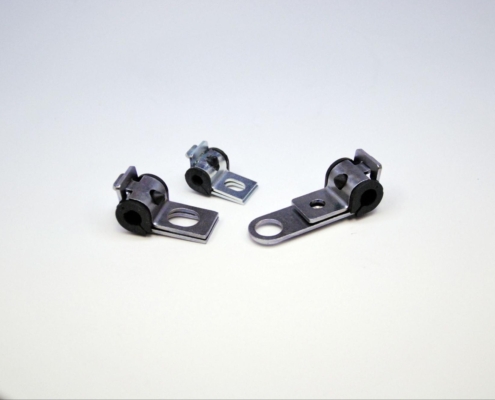 https://franklinfastener.com/wp-content/uploads/2025/09/image1-3.jpg
1339
1999
Abstrakt Marketing
/wp-content/uploads/2022/12/fastener-logo1-01.png
Abstrakt Marketing2025-09-18 08:34:262026-01-04 09:50:06Innovations in Engineered Clamp and Clip Manufacturing: What Engineers Need to Know
https://franklinfastener.com/wp-content/uploads/2025/09/image1-3.jpg
1339
1999
Abstrakt Marketing
/wp-content/uploads/2022/12/fastener-logo1-01.png
Abstrakt Marketing2025-09-18 08:34:262026-01-04 09:50:06Innovations in Engineered Clamp and Clip Manufacturing: What Engineers Need to Know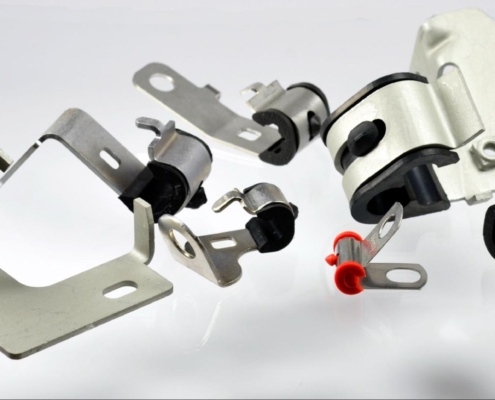 https://franklinfastener.com/wp-content/uploads/2025/09/image1-2.jpg
966
1999
Abstrakt Marketing
/wp-content/uploads/2022/12/fastener-logo1-01.png
Abstrakt Marketing2025-09-18 08:26:442026-01-04 09:50:06Corrosion‑Resistant Clamps and Clips for Heavy Truck & Off‑Road Applications
https://franklinfastener.com/wp-content/uploads/2025/09/image1-2.jpg
966
1999
Abstrakt Marketing
/wp-content/uploads/2022/12/fastener-logo1-01.png
Abstrakt Marketing2025-09-18 08:26:442026-01-04 09:50:06Corrosion‑Resistant Clamps and Clips for Heavy Truck & Off‑Road ApplicationsAbout Us
Franklin Fastener is an industry-leading provider of engineered metal products. From concept to completion, our experts provide our clients with the highest service levels.
